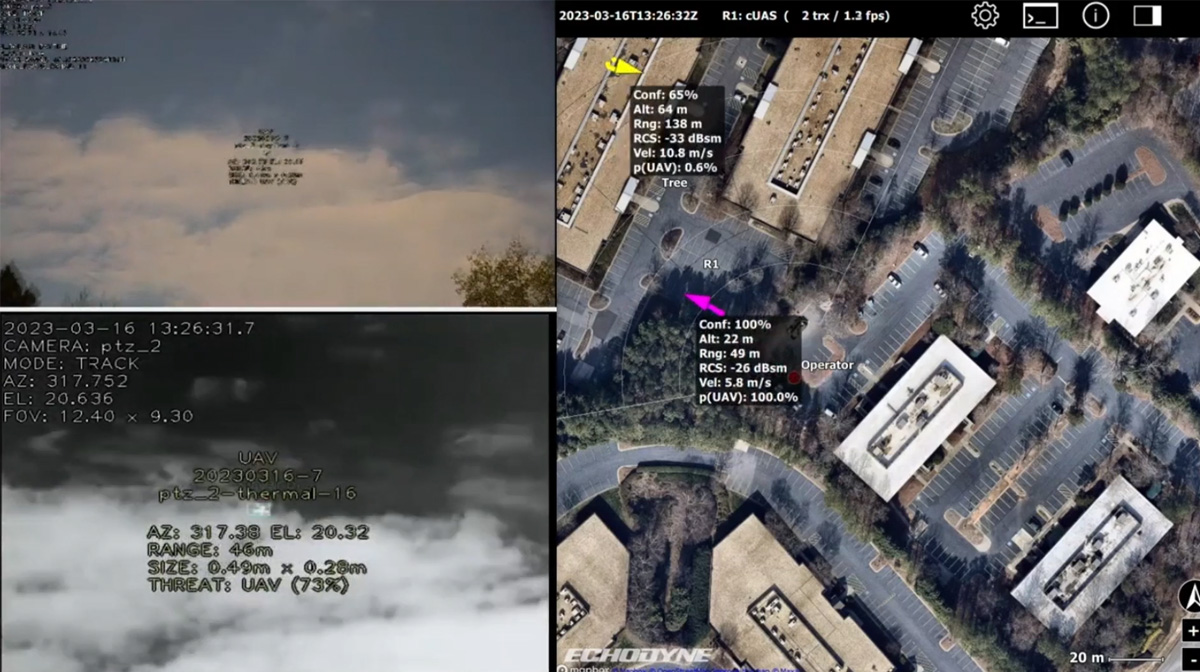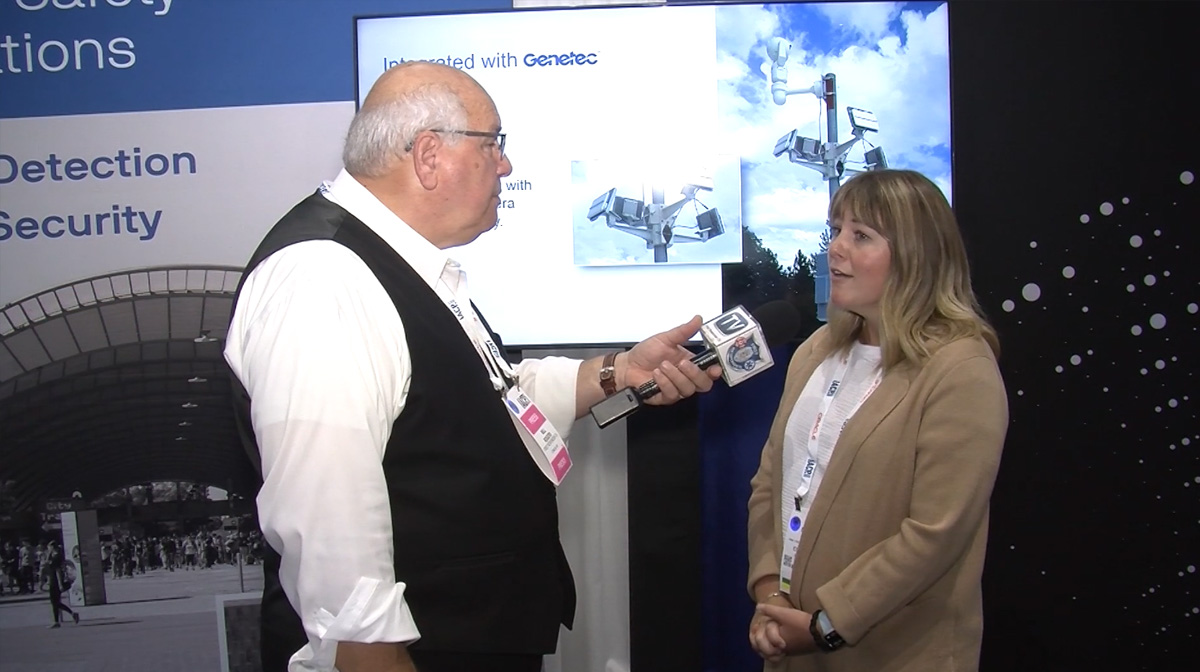Radar Improves Law Enforcement Operations and Public Safety
Law Enforcement TV’s Bill Rogers interviews Bri Clark, Echodyne Regional Sales Manager, and discovers how radar is helping law enforcement teams who are using drones as tools and are concerned with drones as threats to public safety.
Key highlights about how law enforcement teams are integrating radar to improve operations and public safety:
- Radar is a technology force multiplier and used in conjunction with other sensors and systems to achieve comprehensive situational awareness
- Radar is preferred for tracking drone threats at large public events
- Radar improves safety for DFR (drone as first responder) programs seeking to fly beyond visual line of sight (BVLOS)
- Radar can be mounted permanently or used in mobile law enforcement applications
Read the full interview below or watch the interview here
The Interview
Bill Rogers:
Welcome back. Well, if your department or campus are looking for a way to protect everybody, look no further than Echodyne. I'm here with Bri Clark, and I tell you what, very impressed with this because technology is our friend, but it is being used for evil purposes out there and you have some solutions. Tell us a little bit about your company.
Bri Clark:
Here at Echodyne, we manufacture a radar that is used to detect movement and that can be for vehicles, people or commonly in this environment, for drones - detecting drones, tracking them, and understanding where they're flying in an airspace.
Bill Rogers:
And you have a solution for different events, areas that people need covered.
Bri Clark:
Yeah, I think really commonly when there's a large gathering of people that tends to invite some potentially nefarious behaviors. So being able to protect using a tower for an event security situation is a very common use case of where you might need radar to detect drones.
Bill Rogers:
And really, you've already had a number of these deployed, protecting large parts of America.

Bri Clark:
Absolutely, yeah. We work with a lot of our ecosystem partners to build a full stack in order to protect electric utilities, stadiums, concerts, other popular events, things like that.
Bill Rogers:
Now let's say someone contacts you and says, "What can you do for us to make sure that we're not open to these kinds of attacks?" Do you sit down with it and tailor your services to their needs?
Bri Clark:
Great question. Yeah, our radar is software defined, so you can kind of apply it to whichever use case you might need.
Bill Rogers:
And that might mean geographically or different types of things that you want to detect?
Bri Clark:
Sure. In certain scenarios you might want to see people walking towards a perimeter of an area as well as understanding if drones are flying nearby. In some situations, police might be using their own drones to surveil an area and need to ensure that the airspace is clear for them - no Life Flight helicopters or other obstructions in the air.

Bill Rogers:
And I've seen some of your videos and some of it looks like it's infrared or night vision. Is that right?
Bri Clark:
We integrate with a lot of different types of cameras and we help to slew the camera to point at the target and understand what the threat is. So often people are using thermal or infrared cameras “driven” by radar data to be able to get greater visibility at night or in limited light conditions.
Bill Rogers:
Now, can you also advise them on maybe what kind of cameras they might need?
Bri Clark:
We work with a lot of different camera manufacturers and also a lot of integrators and partners, and we typically rely on them to be experts in that field.
Bill Rogers:
Now, Bri, why is it that you say radar should be part of your solution?
Bri Clark:
We know that drones were originally introduced and used mostly in the US as a toy, something to go out and fly a fun little object around, maybe have a camera on it. What we're seeing more and more is that people are using that tool as something for bad, and one of the ways that happens is they're flying what we call dark drones. So maybe they're flying via 5G, maybe they're flying a home-built drone that doesn't necessarily show up for other types of detection. Radar detects all kinds of movement. So, whether a drone is flying by the book or not, we are able to see it, track it and help our users understand that threat.
Bill Rogers:
That's one less thing the bad guys can use against it [law enforcement].
Bri Clark:
Absolutely.
Bill Rogers:
Well, I tell you what, when we head to one of these events, it's going to bring us a great peace of mind, not only to the attendees, but for those putting on the event that this is one less thing they have to worry about, one part of the frustration factor they can remove from the equation. And with that said, right now, Bri, I know you have to have the attention of all of our viewers out there. What's the best way for them to learn more about all the services you offer?
Bri Clark:
Absolutely. If you visit Echodyne.com, there's a bunch of resources there, and if you fill out the contact information form on there, one of the members of our team will reach out and can educate you on whatever your individual use cases may be [public safety event security, Drone as First responder (DFR) programs, search and rescue, and more applications] .
Bill Rogers:
Easy enough. Bri, thanks so much for being on.
Bri Clark:
Yeah, thanks so much, Bill.
